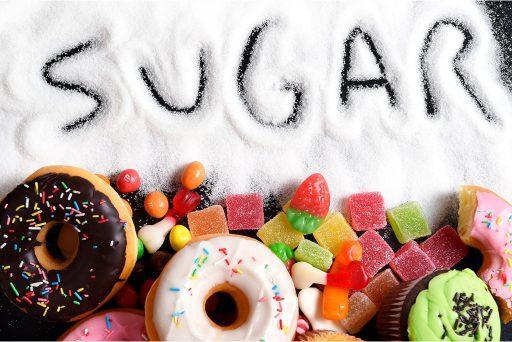Sugar Addiction: How to Cut Down Without Crashing
Sugar is everywhere. It sneaks into your morning coffee, hides in sauces, and even finds its way into savory snacks. For many, it serves as a sweet escape from the daily grind. But what happens when that innocent craving turns into something more? The truth about sugar addiction is startling—it can affect your mood, energy levels, and overall health. If you’ve ever found yourself reaching for sugary treats more than you’d like to admit, you’re not alone. Understanding the risks associated with excessive sugar intake is crucial for reclaiming control over your health.
Let’s dive deeper into this sticky situation and explore how to cut down on sugar without crashing hard as you break free from its grip!
The Truth About Sugar Addiction
Sugar addiction is more common than you might think. It can create powerful cravings that lead to a cycle of overindulgence. Many people don’t realize that sugar activates the same reward pathways in the brain as drugs or alcohol. This means it can be just as hard to resist.
When consumed, sugar releases dopamine, making you feel good temporarily. But this fleeting pleasure often leads to increased consumption, creating a need for more frequent hits of sweetness. Over time, your body starts craving sugary foods even when you’re not hungry.
The emotional aspect can’t be overlooked either. Stress and anxiety can drive individuals toward sugary snacks for comfort, reinforcing unhealthy habits with each bite. Understanding this connection is the first step toward breaking free from its hold and reclaiming your well-being without letting sugar dictate your choices.
Negative Effects of Too Much Sugar on the Body
Excessive sugar intake can wreak havoc on your body. From weight gain to increased risk of chronic diseases, the consequences are serious.
High sugar consumption leads to insulin resistance. This condition can pave the way for type 2 diabetes, a growing health crisis worldwide.
Additionally, sugary foods and drinks provide empty calories with little nutritional value. This means you might feel hungry soon after consuming them.
Sugar also contributes to heart disease by raising blood pressure and increasing triglyceride levels in the bloodstream. These changes strain your cardiovascular system over time.
Moreover, too much sugar can impact mental health. Studies suggest a link between high sugar diets and mood disorders like anxiety and depression.
It’s essential to recognize that habits surrounding sugar may lead to addiction-like behaviors—craving sweets even when you’re not physically hungry is common among those who consume large amounts regularly.
Identifying Signs of a Sugar Addiction
Do you often find yourself reaching for sweets even when you’re not hungry? This compulsive behavior can be a clear sign of sugar addiction.
Another red flag is experiencing mood swings or irritability when you skip sugary treats. If your day feels incomplete without that afternoon chocolate, it might indicate a reliance on sugar to lift your spirits.
Physical cravings also play a role. Notice how your body reacts after consuming high-sugar foods. A quick energy rush followed by fatigue could signal an unhealthy cycle.
Consider the times when you feel guilty about indulging in dessert yet find it hard to resist another piece. This internal conflict can highlight emotional ties to sugar that may need addressing.
Pay attention to these signs and reflect on your relationship with sweet snacks—understanding them is the first step toward making healthier choices.
Steps to Cut Down on Sugar Intake
Start by tracking your sugar intake. Keep a journal or use an app to see exactly how much sugar you consume daily. Awareness is key.
Next, read labels carefully. Sugar can hide under many names like sucrose, glucose, and corn syrup. Understanding what you’re eating makes it easier to make healthier choices.
Gradually reduce the amount of sugar in your diet instead of cutting it out completely. This approach helps minimize cravings and prevents withdrawal symptoms.
Swap sugary drinks for water or herbal teas. Adding lemon or mint can enhance flavor without the extra calories.
Incorporate more whole foods into your meals—fruits, vegetables, lean proteins, and healthy fats are all great options that keep you satiated longer.
Don’t forget to practice mindful eating. Savor each bite and listen to your body’s hunger signals; this can help curb unnecessary snacking on sugary treats.
Healthy Alternatives to Satisfy Your Sweet Tooth
Finding healthy alternatives to satisfy your sweet cravings can make a world of difference. Fresh fruit is often the best choice. Berries, apples, and bananas provide natural sweetness along with vital nutrients.
Try yogurt topped with honey or agave syrup for a creamy treat that feels indulgent without the sugar crash. You can also experiment with smoothies using spinach, avocado, and a splash of almond milk blended together with frozen fruit.
If you’re in the mood for baking, consider using mashed bananas or unsweetened applesauce as substitutes for sugar in recipes. These options add moisture and flavor while cutting down on refined sugars.
Dark chocolate is another satisfying option; it has less sugar than traditional chocolate bars but still curbs that desire for something sweet. Nuts like almonds or walnuts can be lightly drizzled with honey for a crunchy snack that hits all the right notes without overdoing it on sugar intake.
Importance of a Balanced Diet and Exercise in Breaking Sugar Addiction
Breaking free from sugar addiction requires more than just cutting back on sweets. A balanced diet plays a crucial role in this journey. Nourishing your body with whole foods like fruits, vegetables, lean proteins, and healthy fats provides the nutrients necessary for optimal health. These foods can help stabilize blood sugar levels and reduce cravings.
Incorporating regular exercise into your routine is equally important. Physical activity not only boosts mood but also helps regulate appetite and metabolism. It can serve as a natural way to elevate energy levels without reaching for sugary snacks.
Combining these elements creates a sustainable lifestyle change rather than a quick fix. By focusing on overall well-being, you’ll find it easier to resist the pull of sugar while enjoying delicious meals that fuel your body properly.
As you embark on this path, remember that small changes lead to significant results over time. Embrace the process, celebrate each step toward healthier choices, and watch how it transforms both mind and body in breaking the cycle of sugar dependency.










